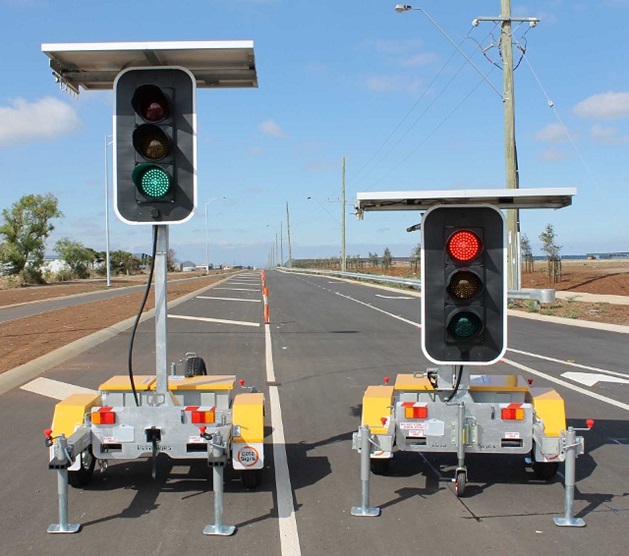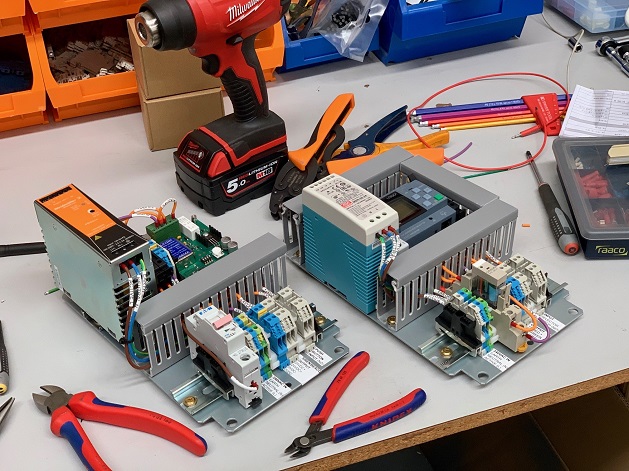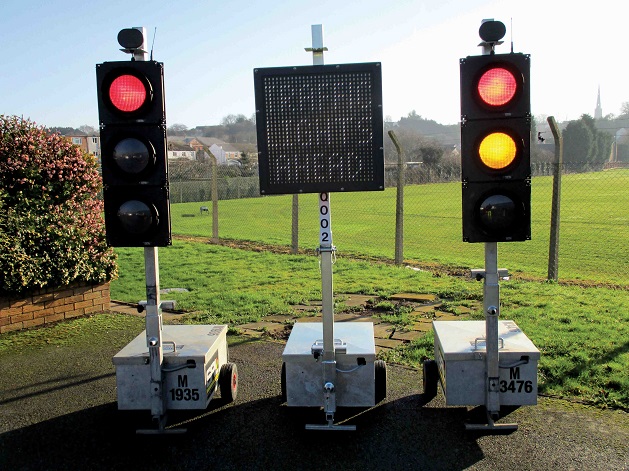
The first operational traffic lights in Australia were switched on October 13th1933 in Sydney, between the intersection of Kent and Market Street. Though few motorised vehicles existed at the time, traffic lights soon sprang up in other major capital cities throughout the country. Today, with millions of vehicles on our roads, there are thousands of locations where traffic lights safely regulate the huge volumes of traffic flow. Most systems are now automated, and states have installed integrated networks ensuring pedestrians and motorists get to their destinations quickly and safely.
Parts of Traffic Signalling Network
Simplicity often has complex foundations. Though you might think that traffic lights function on their own, simply changing lights from red to yellow and green, this is far from the truth. In fact, an intricate network of devices, and organisation and planning have created what most of us take for granted. Besides the traffic signals mounted on posts, there are traffic controllers at each intersection or crossing, an array of vehicle detector loops and pedestrian push buttons, all functioning through the power and signal lines hidden underground and well out of sight. Each traffic light is networked with adjacent lights, and the whole system is controlled by a centralised traffic authority in each state. Central to this network is the traffic lights controller.
What is a Traffic Light Controller?

A traffic lights controller is the brain of the system, telling each part what to do. These are the grey boxes found mounted along individual posts at intersections. It is basically a computer, interpreting the signal from the different parts of the system, including detector loops or push-button operated lights activated by pedestrians. Controllers can be programmed with a fixed time length, as to how long the green lights run, before switching to amber (yellow) and then red. However, most on Aussie roads are smart controllers that ‘read’ traffic volumes at different parts of the road and change the signal accordingly to allow for easy flow of high-volume traffic in one direction. This is what is used to avoid gridlock during rush hour.
What Can Traffic Lights Controllers Do?
Depending on the type of intersection or crossing at which they are deployed, traffic lights controllers can control single intersections, a network of intersections at fixed distances and a pedestrian or vehicle crossing, for instance, exits and entrances in car parks, or business grounds. They’ll electrically switch signals from green to amber and then red for vehicles, while simultaneously activating the Don’t Walk, or Walk signal for pedestrians at the same intersection, with flashing signs displayed at given time transition intervals. This includes pedestrian signs and turn signals and determines the right of way in such cases.
Types of Traffic Lights Controllers
Though there are numerous kinds of controllers in operation, traffic lights controllers can be categorised into the following types:
• Pre-timed/Fixed time
• Semi-Actuated
• Actuated
Each combination of green and red signals that the controller is programmed to display is called a phase, and the transition from green-red-green is called a signal cycle. In pre-timed or fixed time controllers the length of the phases is predetermined regardless of the number of vehicles or pedestrians at an intersection. In semi actuated controllers one phase or light is given priority over others. For instance, the green light signal remains longer, and red can be actuated if needed to allow for traffic flow in other directions. Actuated, or fully automatic systems combine with loop detectors and push buttons and no light is given priority, but changes in the traffic lights are based on current traffic volume, both for vehicles and pedestrians.
Traffic Lights Controllers in the Workplace

Besides intersections and crossings, traffic lights are extensively used in roadworks, construction sites, manufacturing facilities and private businesses. In roadworks with lane closures, traffic controllers can be programmed to a fixed time for the green light in one direction and red light in the opposite direction, and vice versa, if the amount of traffic in both directions is roughly equal. Here cheaper pre-timed units will do the job just fine. There will be minimal delay and operators won’t be necessary to change the signal. In heavier traffic and at different times of the day, a semi-actuated traffic lights controller can change signals via a push-button or with a wireless remote that is convenient for distances up to 1000 metres. In large-scale extensive roadworks, automated systems with ultrasonic sensors or wired loop controllers will provide for the least delays.
In industrial settings, traffic controllers are used to restrict access to certain types of vehicles in restricted or no-go zones while permitting essential vehicles. This organises traffic of different vehicle types. For example, in large warehousing facilities, certain vehicles will be given priority at different times of the day, while access to pedestrians and other vehicles will be limited. This provides for safe loading and unloading in dock bays, restricts entry to areas will roller shutter doors, and allows for safer and more organised traffic flow in enclosed areas. Private businesses, like parking lots and car dealerships, will have automated or pre-timed traffic lights controllers that allow access to the grounds during business hours, while restricting traffic when closed.


